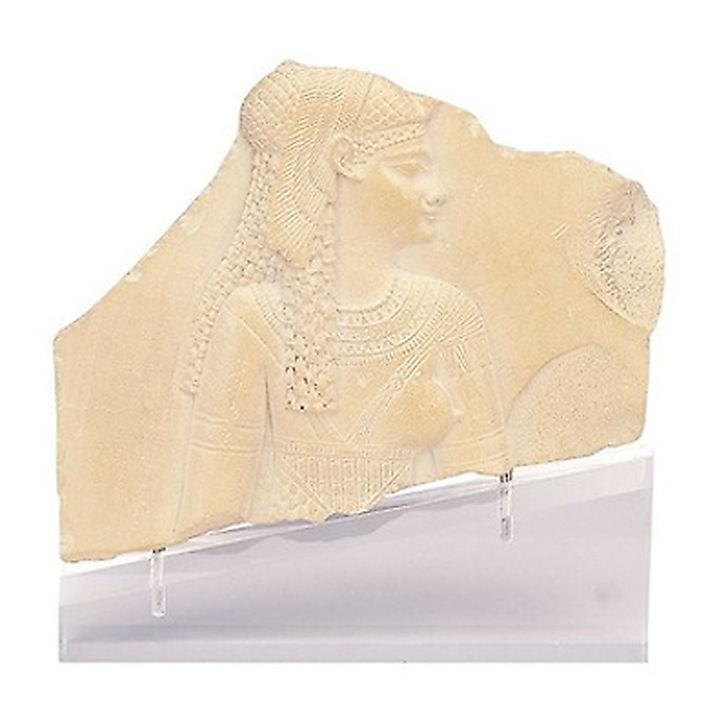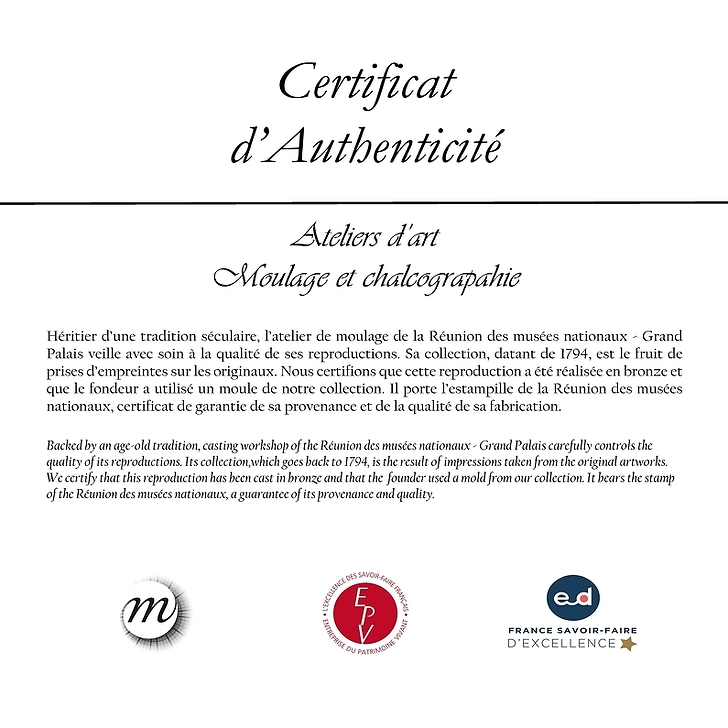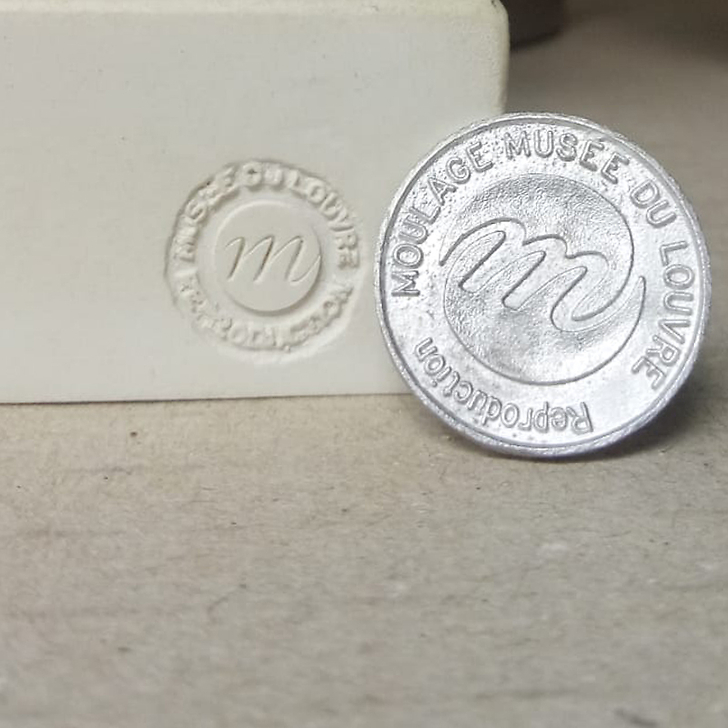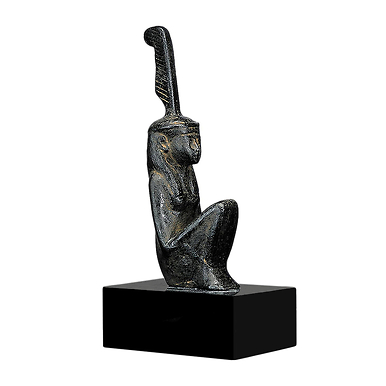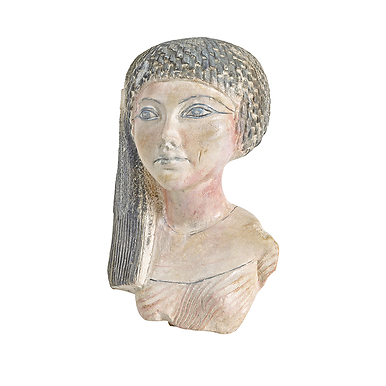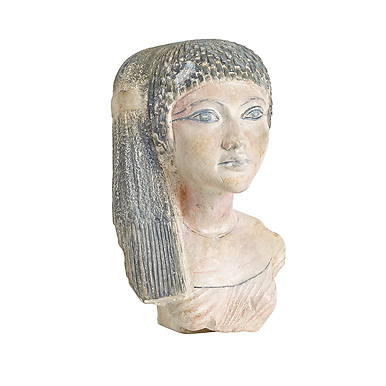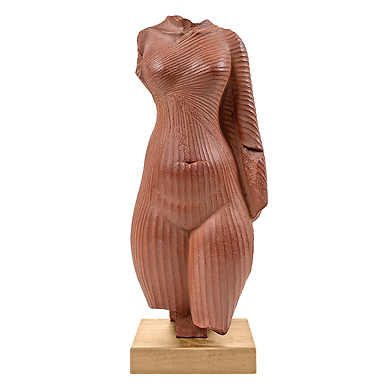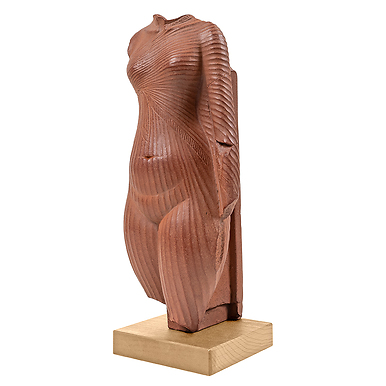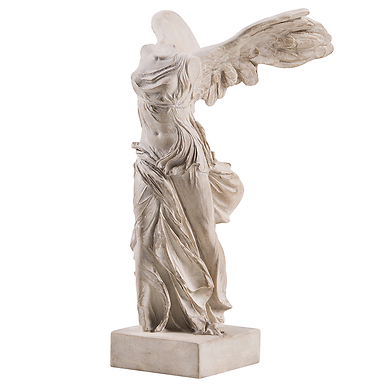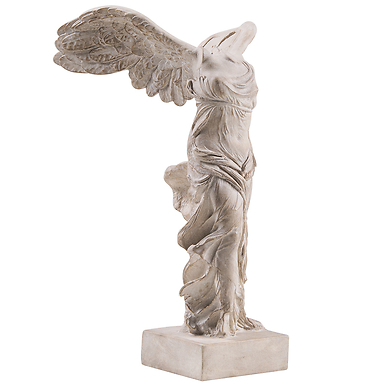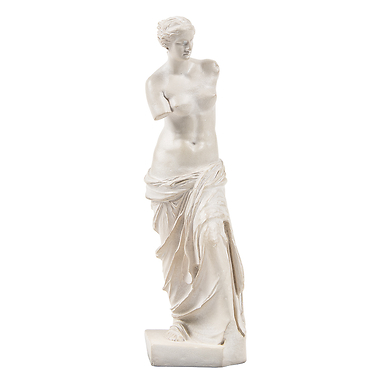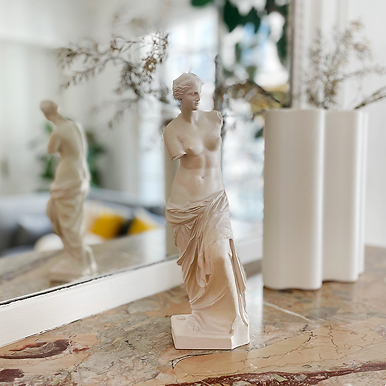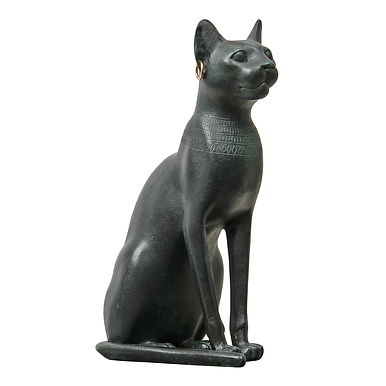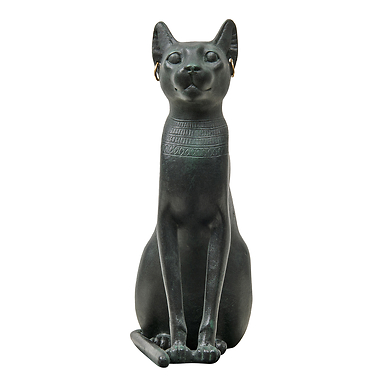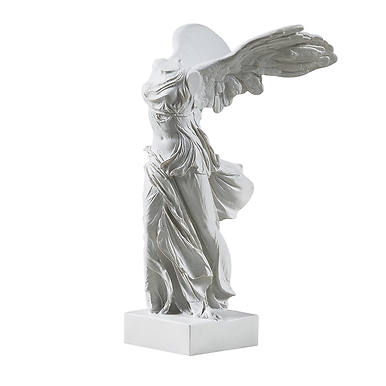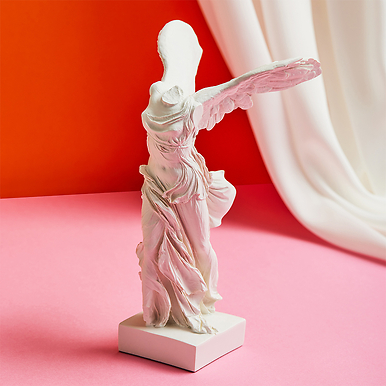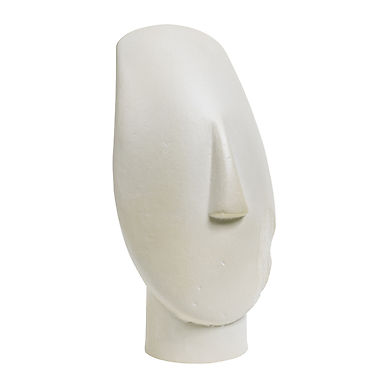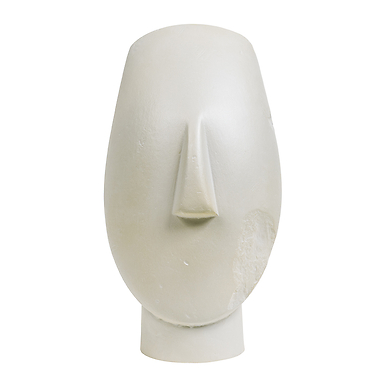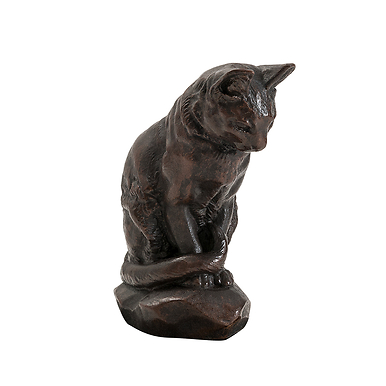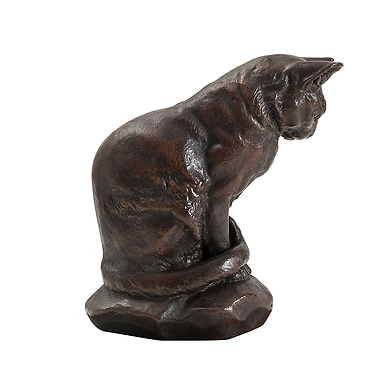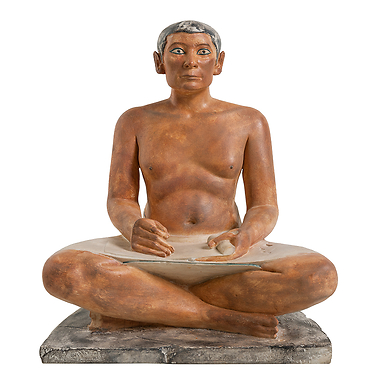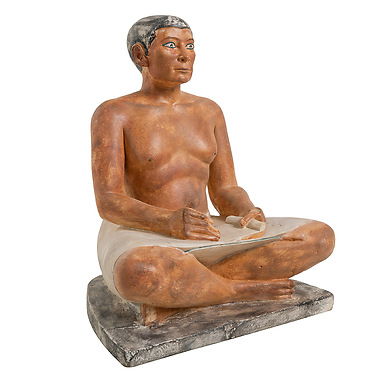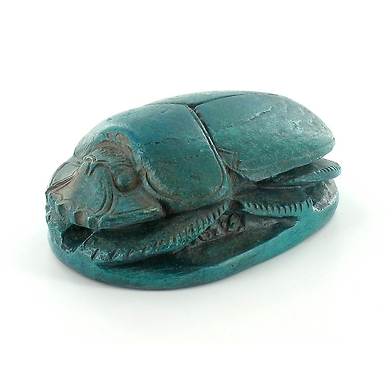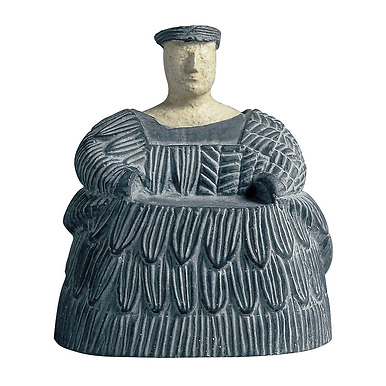Sculpture Fragment of a stele showing a goddess
RE000069
Hand patinated reproduction. Mold made from a print of the original work on display at the Louvre.
This limestone fragment of an artist's sketch was found in the course of the Franco-Polish excavations at Edfu (Upper Egypt). It is probably the upper part of the great goddess Hathor, venerated in her...
Read more
Hand patinated reproduction. Mold made from a print of the original work on display at the Louvre.
This limestone fragment of an artist's sketch was found in the course of the Franco-Polish excavations at Edfu (Upper Egypt). It is probably the upper part of the great goddess Hathor, venerated in her temple at Denderah, the feminine counterpart of Horus, the solar force that nurtures the life of the world.
The contours of the body and face are in the style of the early period of the Ptolemies, shortly after Alexander the Great conquered Egypt.
During this period, Isis, the mother of humanity, and Hathor, the lover, were merged into one person, and the wife of the Pharaoh was often portrayed with their combined features. It is therefore easy to imagine that the famous Cleopatra - the seventh - was adorned in this fashion when she attempted to charm Anthony and Caesar.
The wig has fine curls arranged in tiers, crowned by the feathers of an eagle, the hooked beak of which is missing.
The top of the tunic is held under the breasts by two straps, one of them completed by a short-fringed sleeve.
Part of two big eagle wings that were supposed to wind round the body to just above the ankles can be seen under the belt.
Finally, the wide delicate gorget, embellished with various decorative elements and worn as a pectoral, is typical of the jewellery of the Ptolemaic period.
Close
Sold by GrandPalaisRmn

